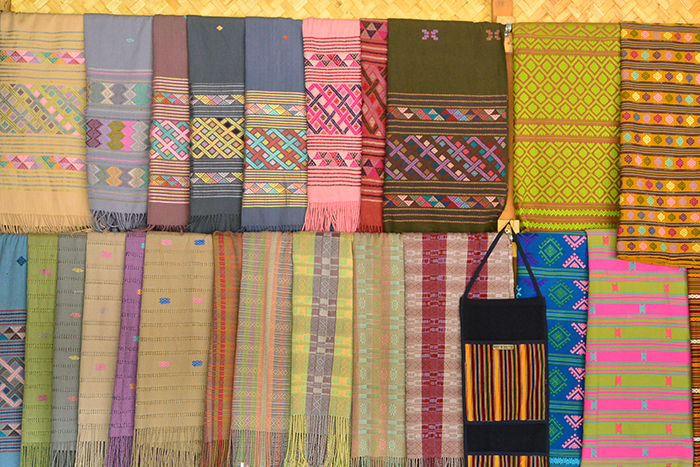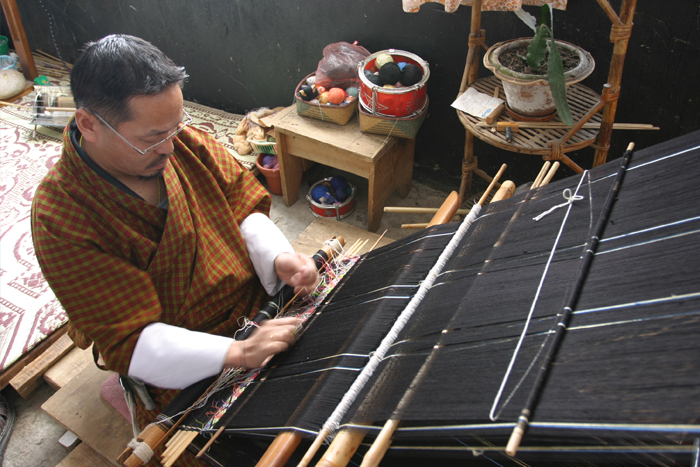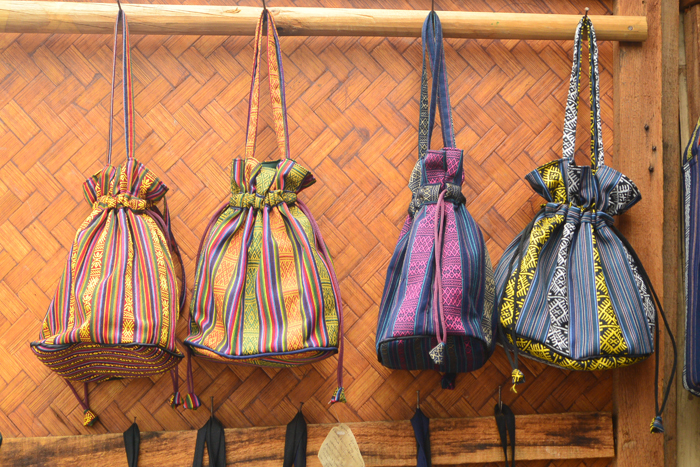Textiles
Bhutanese textiles are known for their rich color, sophisticated patterns and intricate dyeing methods. The variety and splendor of local fabrics are especially apparent during festivals when locals don their best ghos and kiras.
According to legend, weaving was first introduced in Bhutan by the wife of Songsten Gampo. Weavers in Bhutan continue to hone this craft and it is often passed down to them from their mothers and grandmothers.
Districts in eastern Bhutan are especially well known for their weaves, especially the prized kishuthara.
Meander through local clothes shops and handicraft stores if you want to get your hands on textile products that are available in different forms.
Of the 13 celebrated arts and crafts in Bhutan, Thagzo refers to weaving. This is one of the oldest vocations, embedded in Bhutanese history and way of life. Textiles from Bhutan come in a variety of patterns, colors and can feature complex motifs.
Traditionally, women would weave in the winters when there was not much work in the fields. Textiles could once even be used as a form of payment. Nowadays there are still many women in rural Bhutan who weave to supplement their income.
Though there are many textile patterns like martha, pangtse, mentha, sertha and buray, many Bhutanese women dream of owning a kishuthara or silk kira.
The textiles of Bhutan differ from region to region. The most common patterns are available in most handicraft and souvenir shops. Visit the Royal Textile Academy to understand more about this art form and see which design suits your fancy.





